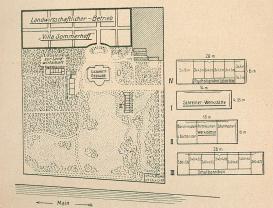This book project aimed at reconstructing the important merging tendencies that since the 1910s have brought formerly separated disciplines (anatomy, physiology, neurology, psychiatry, radiology, and serology etc.) much closer together. Research in the neurosciences avant la lettre was hence strongly reorganized in interdisciplinary research groups and found its substrate in new centers for neuroscientific research (e.g., in Berlin, Munich, Frankfurt, Leipzig, Breslau, etc.), especially in the German-speaking countries.
In Frank Stahnisch's book project, current theories from sociology and philosophy of science that have dealt with the problem of “interdisciplinarity” in the biomedical sciences from a theoretical perspective were explored. The research was followed by an historiographical account of the development of related concepts of the period in their specific cultural settings, while focusing on specific working groups, laboratories, and research centers. It was shown, with respect to the German neuromorphological sciences between 1910 and 1945, that historical concepts, practice, and organizational patterns existed early in the twentieth century that legitimized the use of the term of “interdisciplinary research” even at that particular time.
This study specifically explored the historiographical roles, narratives, and epistemological meanings of concepts of “interdisciplinarity” in the neuroscientific community between 1910 and 1945. The project added to the growing corpus of literature on German neuroscience in a time period that has not received as much attention from medical historians as it should have, in order to better understand the scientific, organizational, and cultural innovations that strongly determined the course of biomedical research after WWII.

